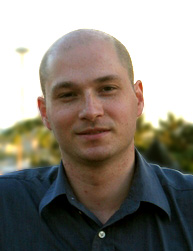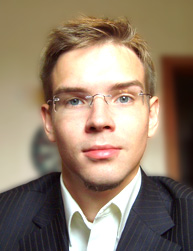
All socials processes develop non-uniformly in geographical space. There are no exceptions. Take any social phenomenon and you will see that it has some geography. Electoral geography, for example, studies regularities and patterns of election results.
Electoral geography is a constituent component of political geography, a science which studies development of all political processes inside geographical space. However, election results are only natural result of numerous social, economic and political processes. Studying the geography of elections is senseless without knowing what is behind these results and what political processes preceded them and what these results mean. It is also senseless to study electoral geography without thorough knowledge of the socio-economic characteristics of the territory where the election is taking place. That is why electoral geography is an exceptionally integrated science: it cannot exist without its constituting sciences, especially political science and geography. However, history, economics and sociology also play important roles.
Beginning from my early childhood I have been interested in geography. By grade school, even though we did not study geography in school yet, I was spending countless hours reading atlases, geographical encyclopedias and books. As a child I knew virtually all the capitals of the world and numerous other big cities spread around the world, easily identifying them on a map. Countless figures of various geographical statistics have stayed in my hypertrophied child memory. I was also enthusiastically interested in Russian politics. In magazines and newspapers I read - almost exclusively – the politics sections and tried not to miss a single political show on TV. This is one reason why my interest in electoral geography came so naturally.
I got interested in geography of elections when I was 13-14 years old. Back then in April 1993 there was a referendum in Russia contesting confidence in president Yeltsin. 58% of participants voted in favor of Yeltsin and he won the referendum. However, Yeltsin lost the referendum in my homeland Smolensk oblast. This fact intrigued me: why did some regions vote in favor of Yeltsin and other vote against him? I decided to gain some understanding about this issue and the more informed I became, the clearer picture of Russia’s electoral preferences was drawn in my mind.
Naturally, I started getting interested in electoral geography of other countries. and my interest did not disappear when I moved to the United States. The internet has helped me a lot in acquiring electoral statistics. I have collected so much interesting material on electoral geography so that some time ago I had the idea to create a website. In 2003 I created a website about the electoral geography of Russia in Russian. But I have always wanted to create a serious bilingual website about the electoral geography of the whole world in Russian and in English. Now in March of 2006 I have finally done it. As far as I know this is the first serious website which is dedicated specifically to the electoral geography of the world.
I already have dozens of megabytes of electoral statistics and maps on the website, but I would be very grateful if you could send me any interesting electoral statistics or maps, especially if you speak a language that I don’t speak, which obviously makes it more difficult for me to find electoral statistics.

My aquaintance with electoral geography began with two student term papers on protest electoral behaviour in Russian legislative elections 2003. In 2004 I made analysis of the election on the lowest constituency level. Later, in 2005 I edited student monograph (in Russian) on the history of electoral studies in the Geography Faculty of the Moscow State University.
In 2006 I offered my help to Alexander Kireev in maintaining this web resource. The website is in beta-stage, so your feedback is very welcome! Please send your comments on: [email protected]
Electoral Geography helps to prove very important thing - the space itself stimulates people to choose democratic forms of government. Territory of each country is heterogeneous and so the motivations and interests of the people tend to diversity. Effective long-term development is possible only in case of consensus of all the diverse interests. Progress in reaching the consensus can be achieved only through elections and referendums. Electoral geography proves this with every new election. And this ensures us that totalitarian states will decline planet-wide.

Electoral geography is more than just maps and data; it's also a socio-political analysis of voting trends in the world's 192 countries. That is what interests me in electoral geography.
As a younger child, I have always been interested in maps and geography. I knew the capitals of a majority of the world's nation and I was always intrigued by learning about the nations of the world. Talking to somebody of a different culture is always something I enjoy doing. Moving to Saudi Arabia in 1996, I got the opportunity to meet people of more than 60 nationalities and appreciate foreign cultures.
However, surprisingly, my interest in politics came and went at first. I barely remember the 2004 US election, but I was in Canada for the 2004 federal election and remember going to a polling place and I was enthralled by the campaign posters hanging everywhere. More recently, in the 2006 federal election in Canada, I was glued to results and spent the day scrolling through constituency data. My interest in electoral geography, however, is not even a year old. Although I had been interested by looking at electoral maps, I became very interested by the time of the 2007 Québec provincial election and most importantly the very-mediatised French elections of 2007. I started my own website with maps of French and worldwide elections by April 2007. From there, producing maps became daily. Technical worries with my own site in July 2007 pushed me to work as a contributor on this website.
My interests are of course in France and Canada, but I always enjoy doing electoral maps of other countries to find out their voting patterns and spot changes between elections.
 Add to Del.icio.us
Add to Del.icio.us Add to Digg!
Add to Digg!